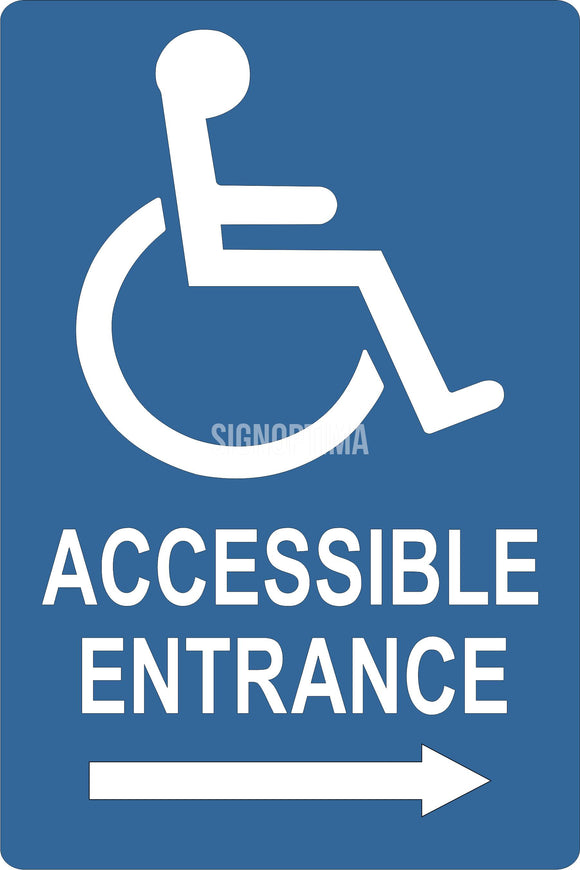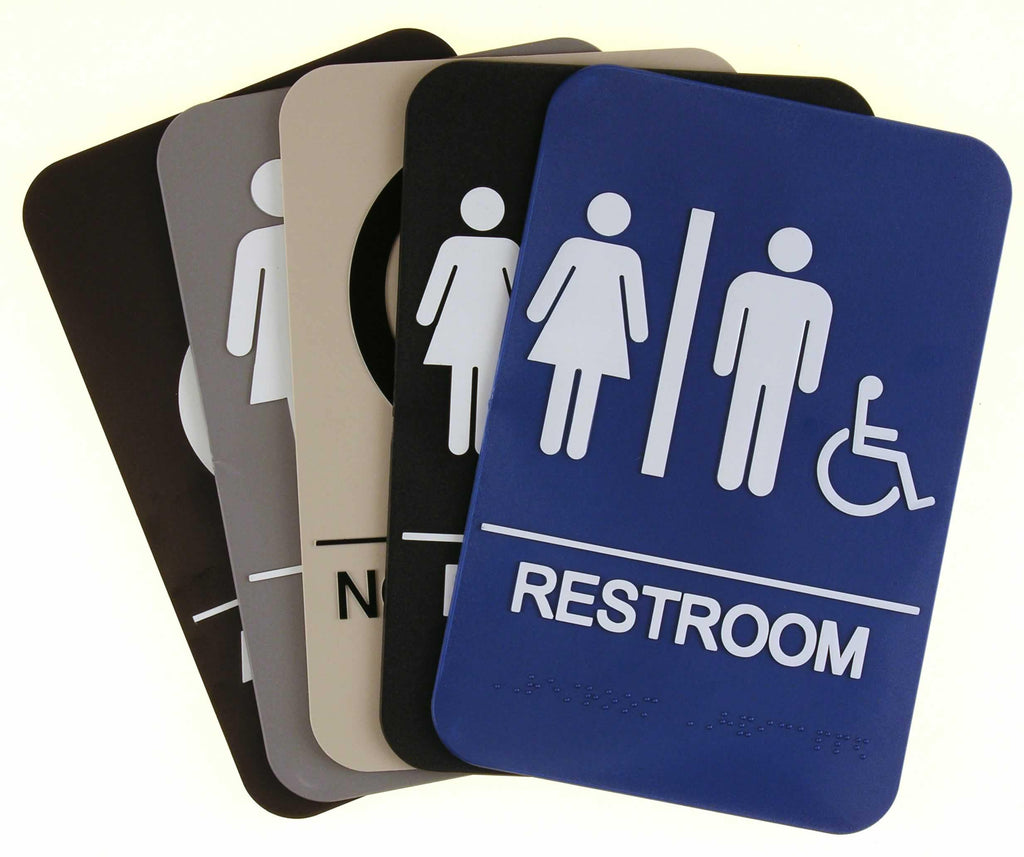Understanding the Laws Behind ADA Signs
Understanding the Laws Behind ADA Signs
Blog Article
Discovering the Secret Attributes of ADA Indications for Enhanced Accessibility
In the world of ease of access, ADA indications work as silent yet powerful allies, ensuring that areas are navigable and comprehensive for people with impairments. By incorporating Braille and tactile elements, these signs break barriers for the visually impaired, while high-contrast shade systems and legible typefaces accommodate diverse visual needs. Their calculated placement is not arbitrary however rather a calculated effort to promote seamless navigating. Yet, beyond these functions exists a deeper narrative regarding the evolution of inclusivity and the continuous commitment to developing equitable areas. What much more could these indications symbolize in our pursuit of global availability?
Significance of ADA Compliance
Guaranteeing compliance with the Americans with Disabilities Act (ADA) is critical for promoting inclusivity and equivalent gain access to in public spaces and workplaces. The ADA, established in 1990, mandates that all public facilities, employers, and transport services fit individuals with impairments, guaranteeing they appreciate the same civil liberties and possibilities as others. Conformity with ADA requirements not just satisfies legal obligations yet likewise improves a company's reputation by demonstrating its dedication to variety and inclusivity.
One of the crucial facets of ADA conformity is the execution of available signage. ADA indicators are created to make certain that individuals with handicaps can conveniently browse via areas and buildings.
In addition, adhering to ADA guidelines can minimize the risk of legal effects and potential fines. Organizations that fall short to comply with ADA standards may encounter lawsuits or charges, which can be both monetarily troublesome and destructive to their public picture. Hence, ADA conformity is integral to fostering an equitable environment for every person.
Braille and Tactile Aspects
The consolidation of Braille and tactile aspects into ADA signs symbolizes the concepts of access and inclusivity. These functions are essential for individuals that are aesthetically impaired or blind, enabling them to browse public spaces with greater independence and self-confidence. Braille, a tactile writing system, is crucial in providing created information in a format that can be easily regarded via touch. It is generally positioned underneath the corresponding text on signage to ensure that individuals can access the info without visual help.
Responsive elements prolong beyond Braille and include raised signs and characters. These parts are designed to be noticeable by touch, permitting individuals to identify area numbers, restrooms, exits, and various other crucial locations. The ADA sets certain guidelines concerning the dimension, spacing, and placement of these responsive components to enhance readability and guarantee uniformity across various atmospheres.

High-Contrast Shade Plans
High-contrast color pattern play a crucial role in improving the visibility and readability of ADA signage for individuals with aesthetic impairments. These schemes are necessary as they make best use of the distinction in light reflectance in between message and history, guaranteeing that indications are quickly noticeable, also from a distance. The Americans with Disabilities Act (ADA) mandates making use of specific color contrasts to accommodate those with restricted vision, making it a crucial element of compliance.
The efficacy of high-contrast shades depends on their ability to stick out in numerous lighting problems, including dimly lit environments and locations with glow. Typically, dark text on a light history or light message on a dark history is employed to accomplish ideal contrast. Black text on a white or yellow history gives a raw aesthetic difference that assists in quick acknowledgment and understanding.

Legible Fonts and Text Size
When considering the style of ADA signs, the option of legible font styles and appropriate text dimension can not be overemphasized. These components are critical for making sure that signs are accessible to individuals with aesthetic disabilities. The Americans with Disabilities Act (ADA) mandates that font styles need to be sans-serif and not italic, oblique, manuscript, very decorative, or of uncommon form. These requirements help ensure that the text is conveniently readable from a distance which the personalities are distinguishable to varied audiences.
According to ADA standards, the minimum message elevation must be 5/8 inch, and it should increase proportionally with checking out range. Uniformity in text dimension contributes to a cohesive visual experience, helping people in navigating environments efficiently.
Moreover, spacing between lines and letters is essential to readability. Sufficient spacing avoids characters from appearing crowded, improving readability. By adhering to these standards, designers can substantially enhance access, ensuring that signs offers its desired purpose for all people, no matter of their visual capacities.
Reliable Positioning Strategies
Strategic placement of ADA signage is important for maximizing availability and making certain conformity with lawful criteria. ADA standards stipulate that indications should be placed at an elevation in between 48 to 60 inches from the ground to ensure they are within the line of view for both standing and seated individuals.
In addition, indications need to be positioned nearby to the lock side of doors to allow simple identification prior to entrance. This positioning helps individuals find rooms and areas without blockage. In cases where there is no door, indications should be positioned on the nearby adjacent wall surface. Uniformity in sign positioning throughout a center improves predictability, decreasing confusion and improving this content general individual experience.

Verdict
ADA indicators play an important duty in promoting access by integrating functions that resolve the demands of people with handicaps. These aspects jointly foster an inclusive environment, highlighting the value of ADA compliance in making certain equal accessibility for all.
In the realm of ease of access, ADA indications offer as silent yet effective allies, ensuring that spaces are navigable and comprehensive for individuals with impairments. The ADA, passed in 1990, mandates that all public facilities, companies, and transport services accommodate people with disabilities, guaranteeing they delight in the same civil liberties and possibilities as others. ADA Signs. ADA indicators are developed to make sure that people with specials needs can conveniently browse via spaces and buildings. ADA standards state that signs ought to be mounted at an elevation between 48 to 60 inches from go to the website the ground to guarantee they are within the line of sight for both standing and seated individuals.ADA indications play a crucial role in advertising availability by incorporating attributes that address the demands of individuals with disabilities
Report this page